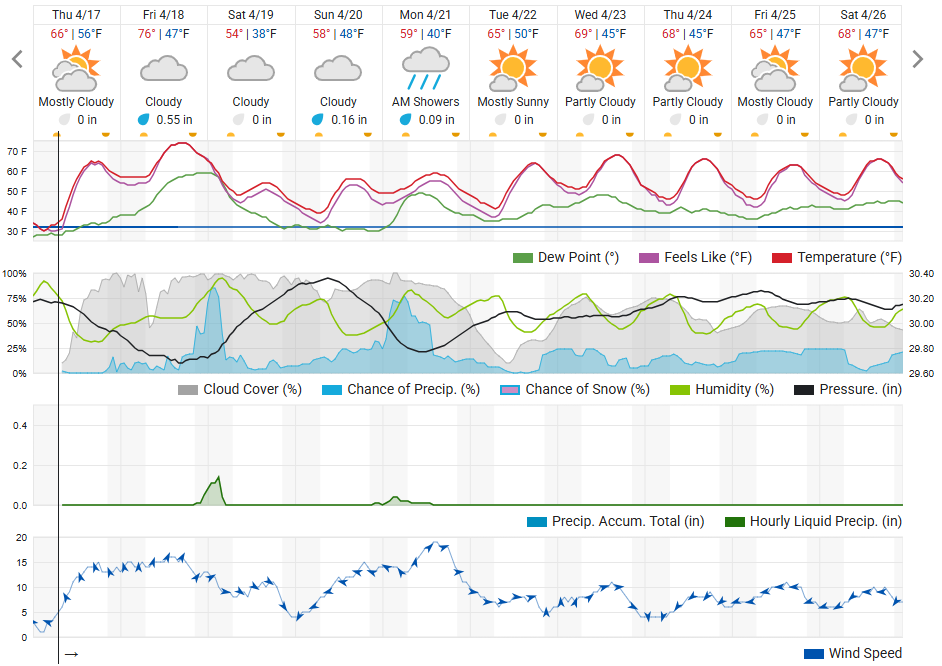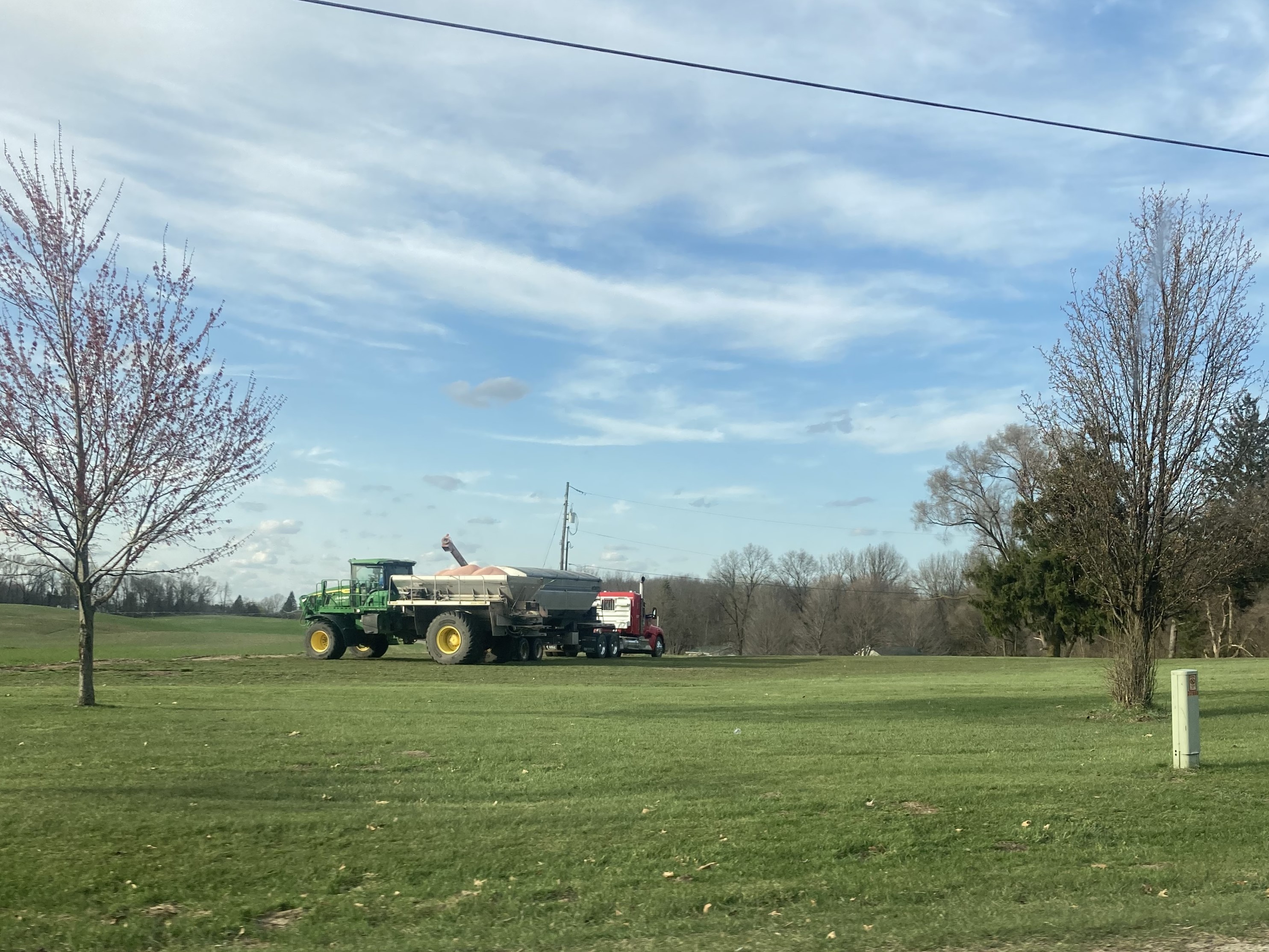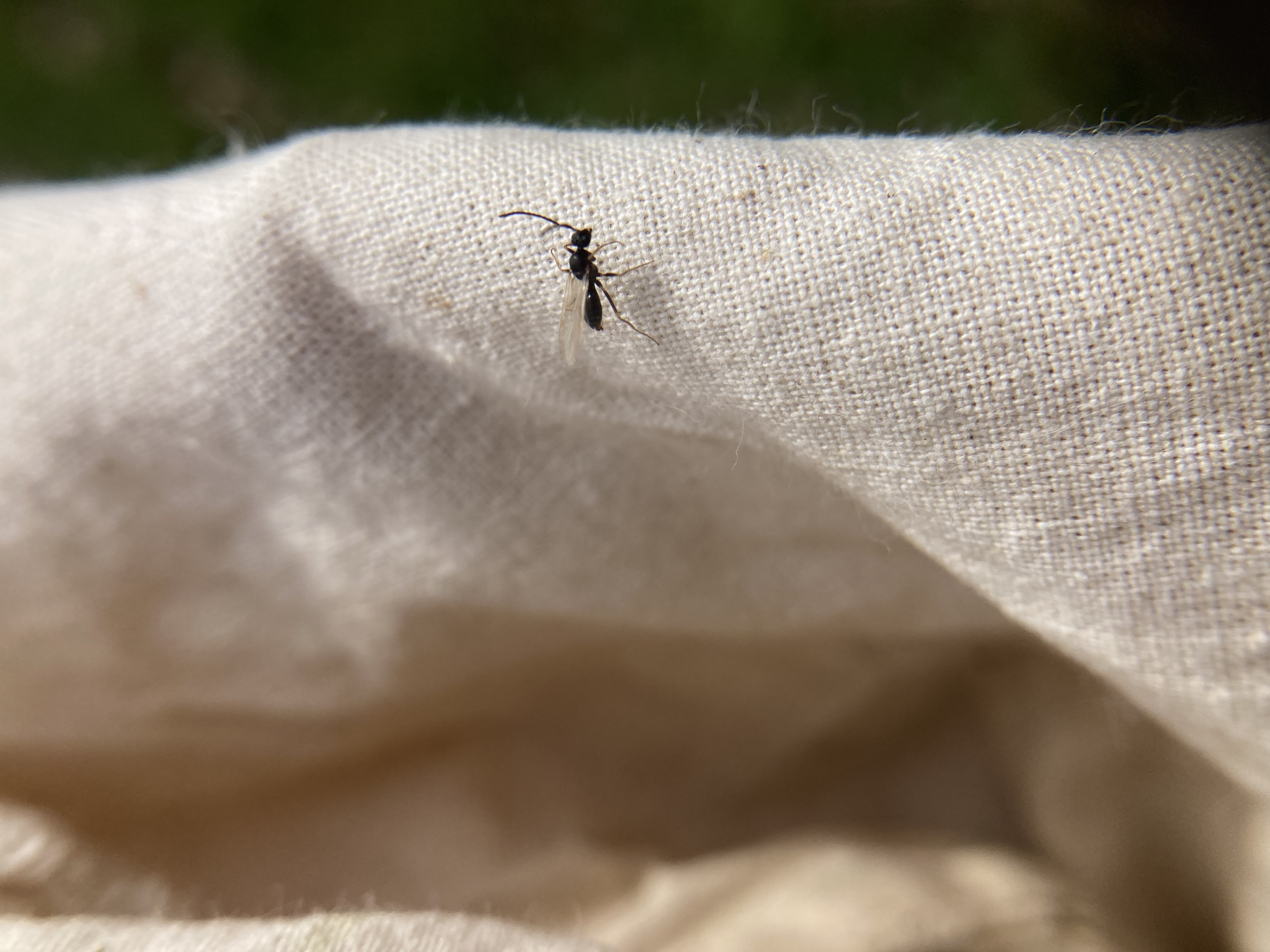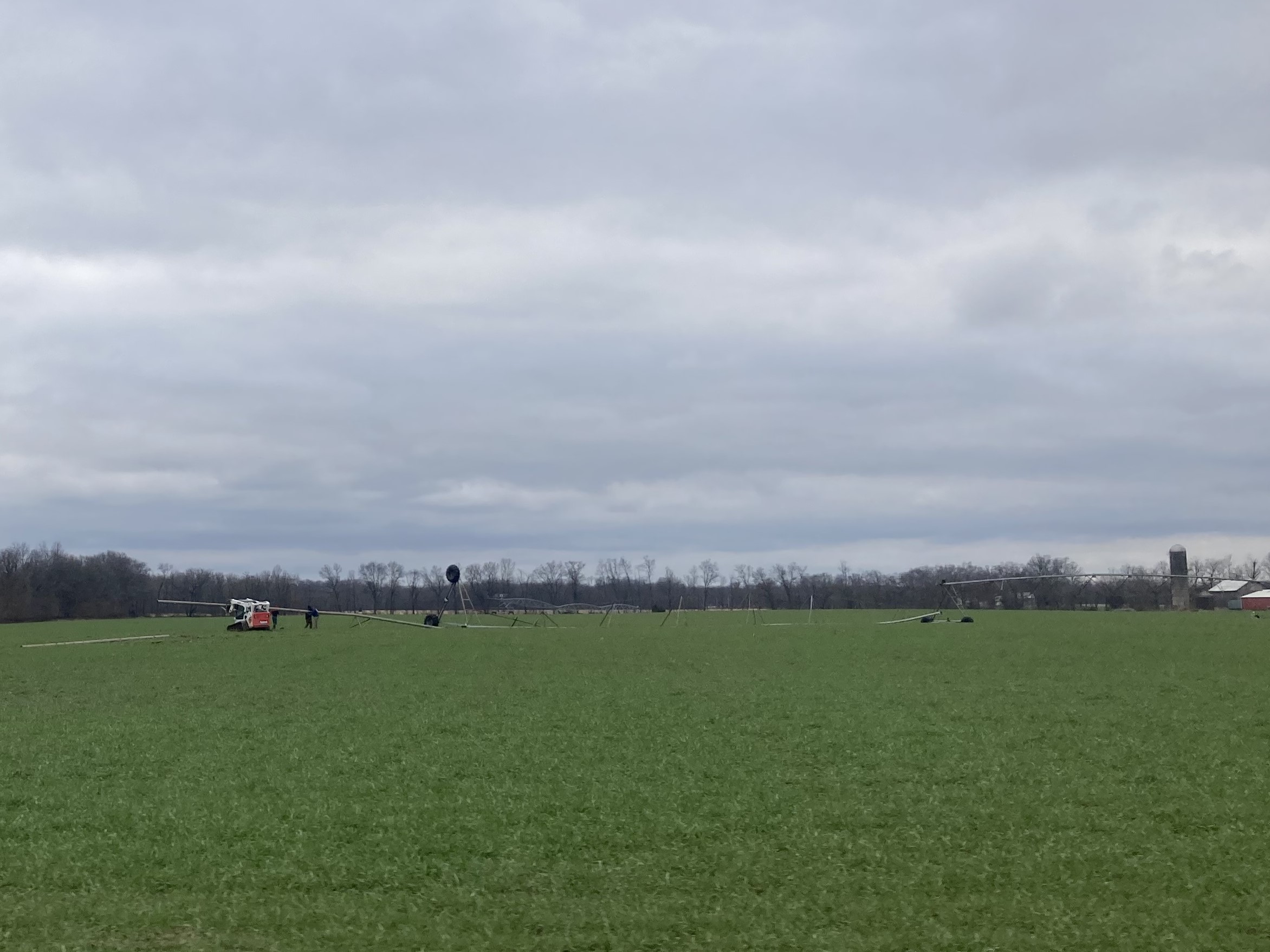Southwest Michigan field crops update – April 17, 2025
A break in the rain resulted in fertilizer spreading, cultivating and even planting. Wheat is at Feekes 4-5, and powdery mildew started in lush stands.

Weather
Early warm temperatures in March seemed promising for early planting, but the past few weeks have been cold and wet. However, a couple days this past week saw some sun and warmth, which resulted in a flurry of field activity. The short window is forecast to close, and cloudiness and rain are predicted for the weekend and into early next week. High winds and hail are possible over the weekend. However, temperatures will increase and remain warm for the next week.


Crops and pests
A few acres of soybeans have been planted. Other field activities include fertilizer and manure spreading, cultivation, cover crop burndown and pivot repairs. Peak flight and egglaying of seedcorn maggot is predicted for tomorrow, April 18, based on the Constantine Enviroweather station data, so avoid planting into decaying residues around this time and for the next little bit.

Bucket traps in Berrien (near Berrien Springs), St. Joseph (Centreville) and Van Buren (Lawrence) counties have caught the following:
True armyworm
|
Date |
Berrien |
St. Joseph |
Van Buren |
|
4/14 |
0 |
0 |
2 |
Black cutworm
|
Date |
Berrien |
St. Joseph |
Van Buren |
|
4/14 |
0 |
0 |
0 |
Winter wheat is very close to Feekes 5 and has hit Feekes 5 in some cases. Fertilizer application occurred last week or earlier in the season, and herbicide applications have gone out recently on some fields. In St. Joseph County, powdery mildew was found at light pressure in a lush stand of wheat. With rainy conditions forecast, it is probably something that more growers will see in their fields soon.

Potatoes started planting mid-March, and a few more acres have been added in the past week. Early planted acres experienced significant precipitation after planting and face seed piece decay risks as emergence is still several weeks away.
Alfalfa and forages greened up several weeks ago, although growth has been minimal. Insect populations are starting to build, including the presence of beneficial insects.

Irrigation update and crop water use
The heavy storm on March 30 caused significant damage to irrigation systems across the area. With the growing season approaching, it’s crucial to begin assessing and repairing your irrigation equipment in a timely manner. Inspect and document your entire system for damage, including pumps, electrical components and pivot structures. Don’t forget to check the perimeter of irrigated fields for fallen trees or debris that could interfere with system operation.
Given that hundreds of pivots were affected, local repair crews may be in high demand, so securing repair bids is important to avoid delays. For more information, refer to Michigan State University Extension’s Irrigation Storm Damage Checklist and the article, “Does your insurance cover damage to irrigation systems?”

Field Crops Virtual Breakfast Series

Nitrogen extenders and stabilizers, presented by Kurt Steinke, was the topic for the Michigan State University Extension Field Crops Virtual Breakfast Series this week. Studies showed that about 66% of variability in corn economic optimum nitrogen (N) rates was caused by weather. Nitrogen stabilizers and extenders help mitigate N unpredictability and losses. Recordings of this and all the Virtual Breakfast meetings are closed-captioned and available at the Field Crops Virtual Breakfast webpage and the MSU Extension Field Crops Team social media platforms: Facebook, Spotify, YouTube, Apple Podcasts and Twitter/X.
This work is supported by the Crop Protection and Pest Management Program [grant no 2024-70006-43569] from the USDA National Institute of Food and Agriculture. Any opinions, findings, conclusions, or recommendations expressed in this publication are those of the author(s) and do not necessarily reflect the view of the U.S. Department of Agriculture.



 Print
Print Email
Email